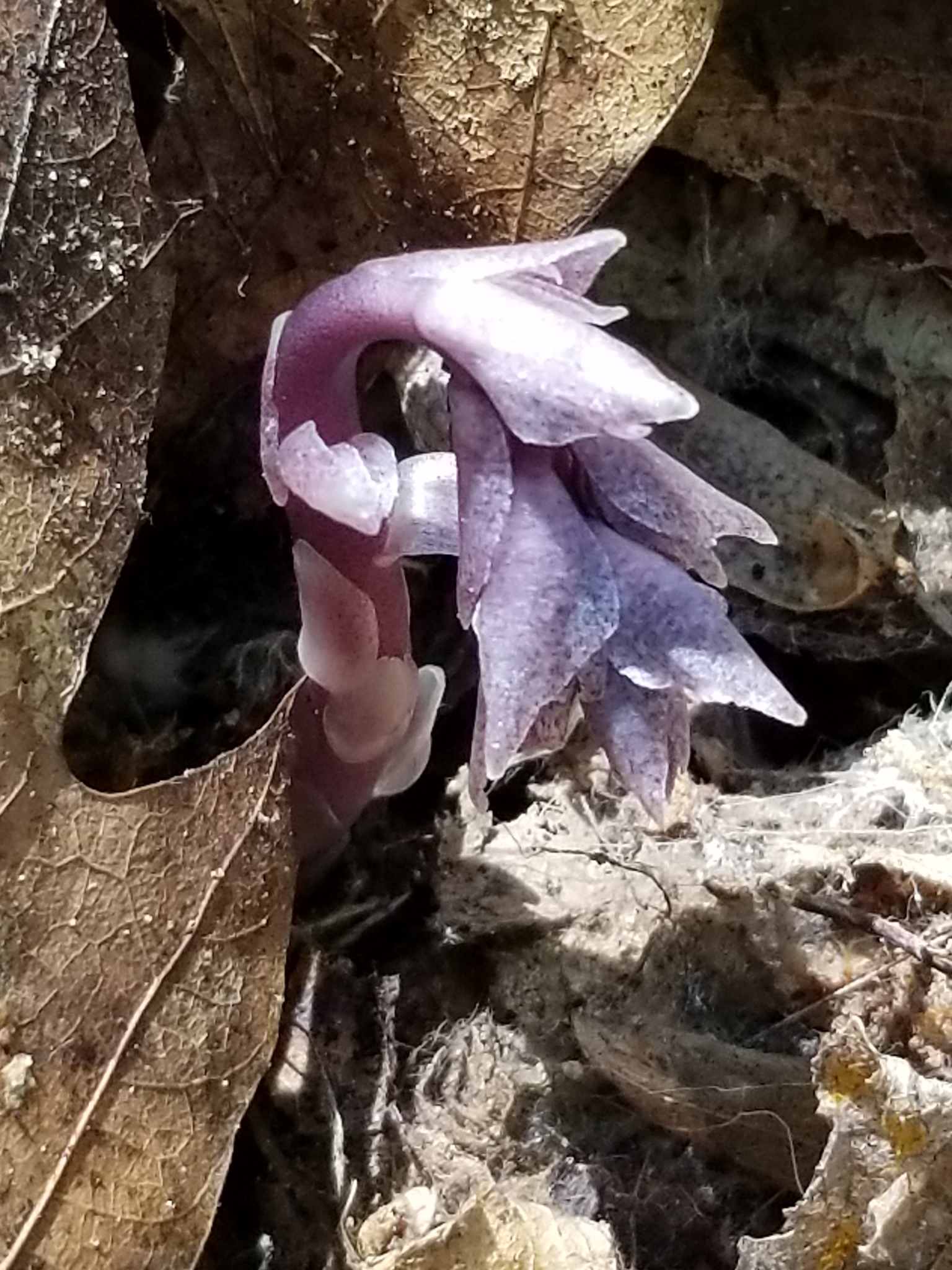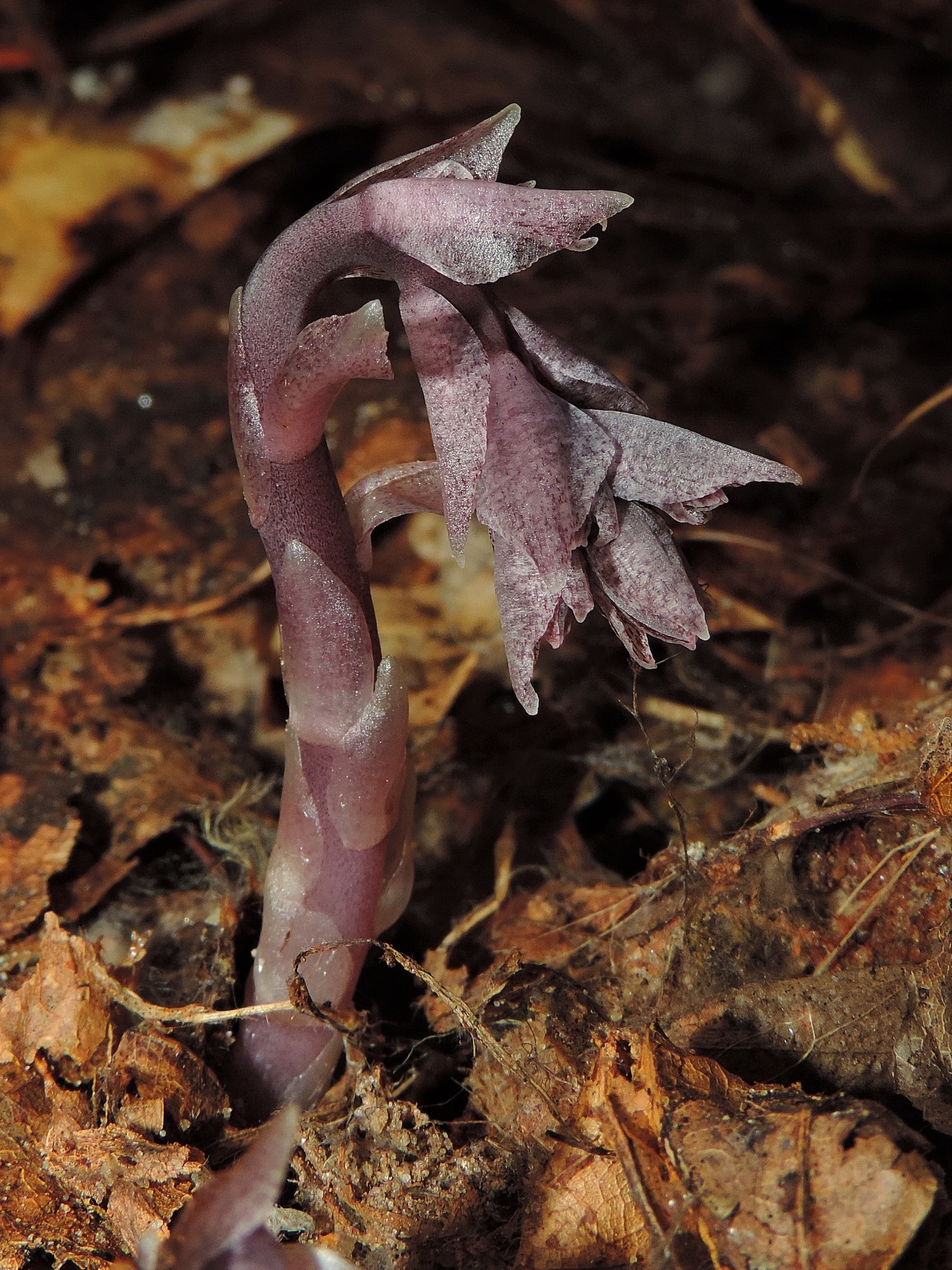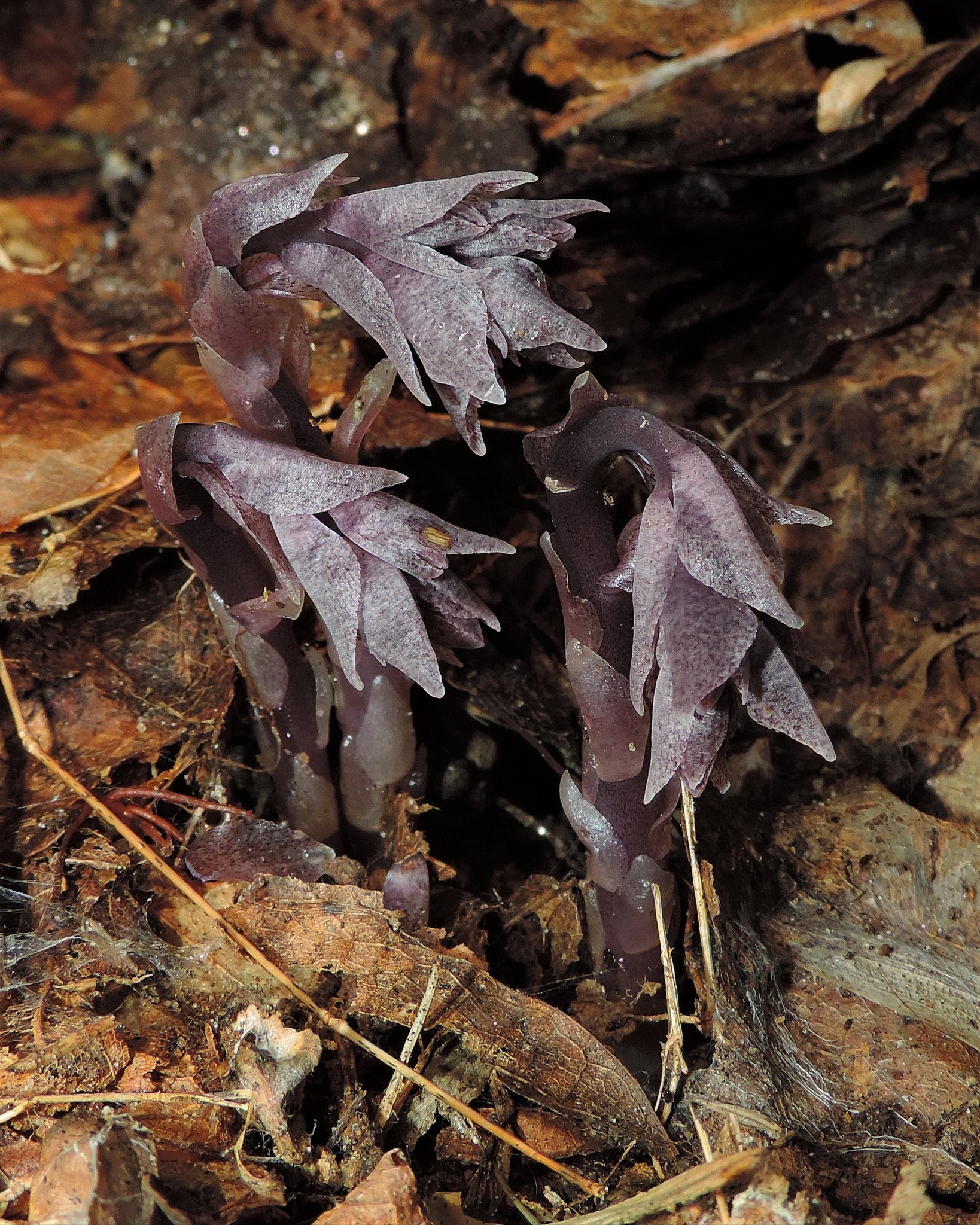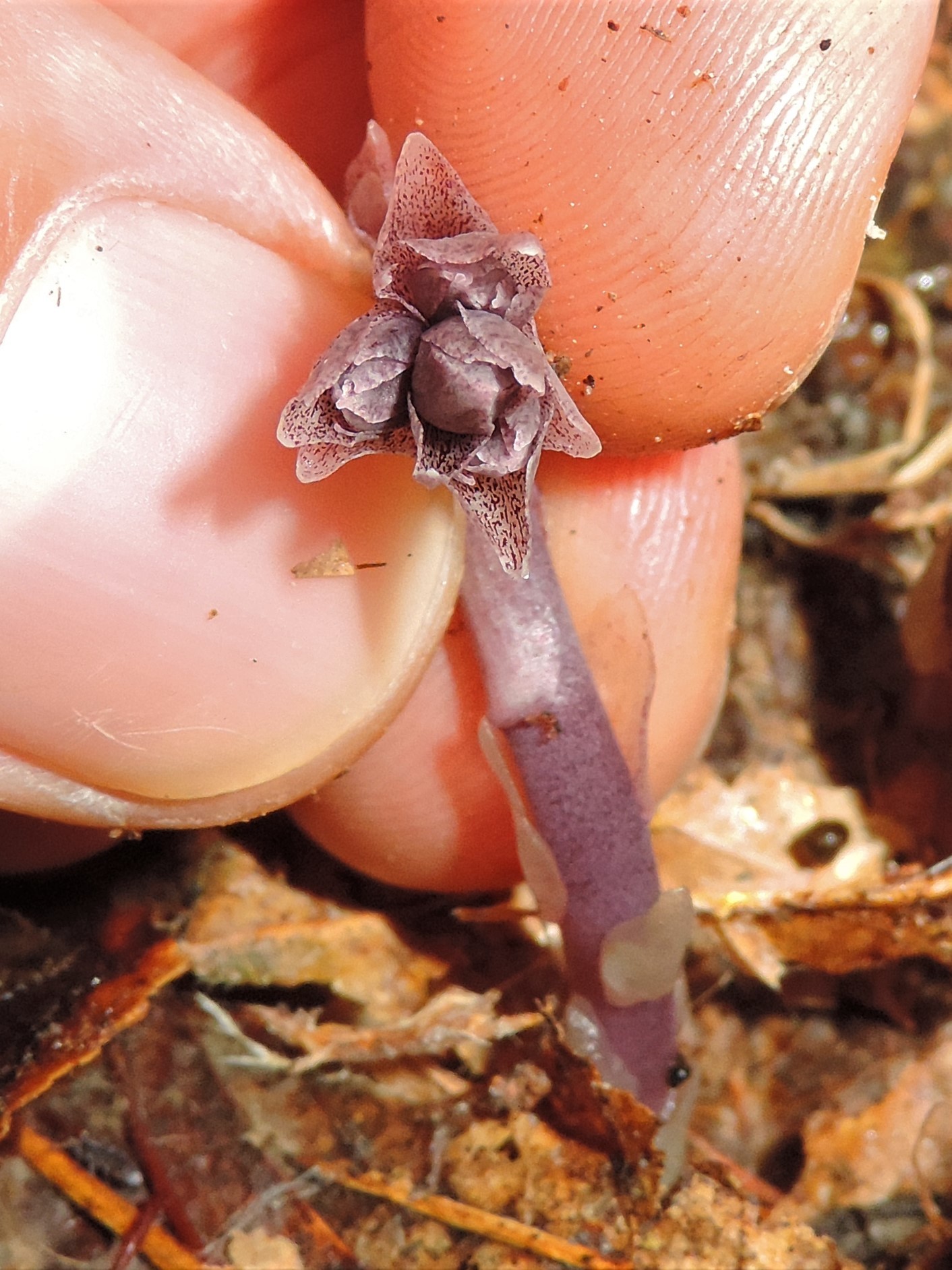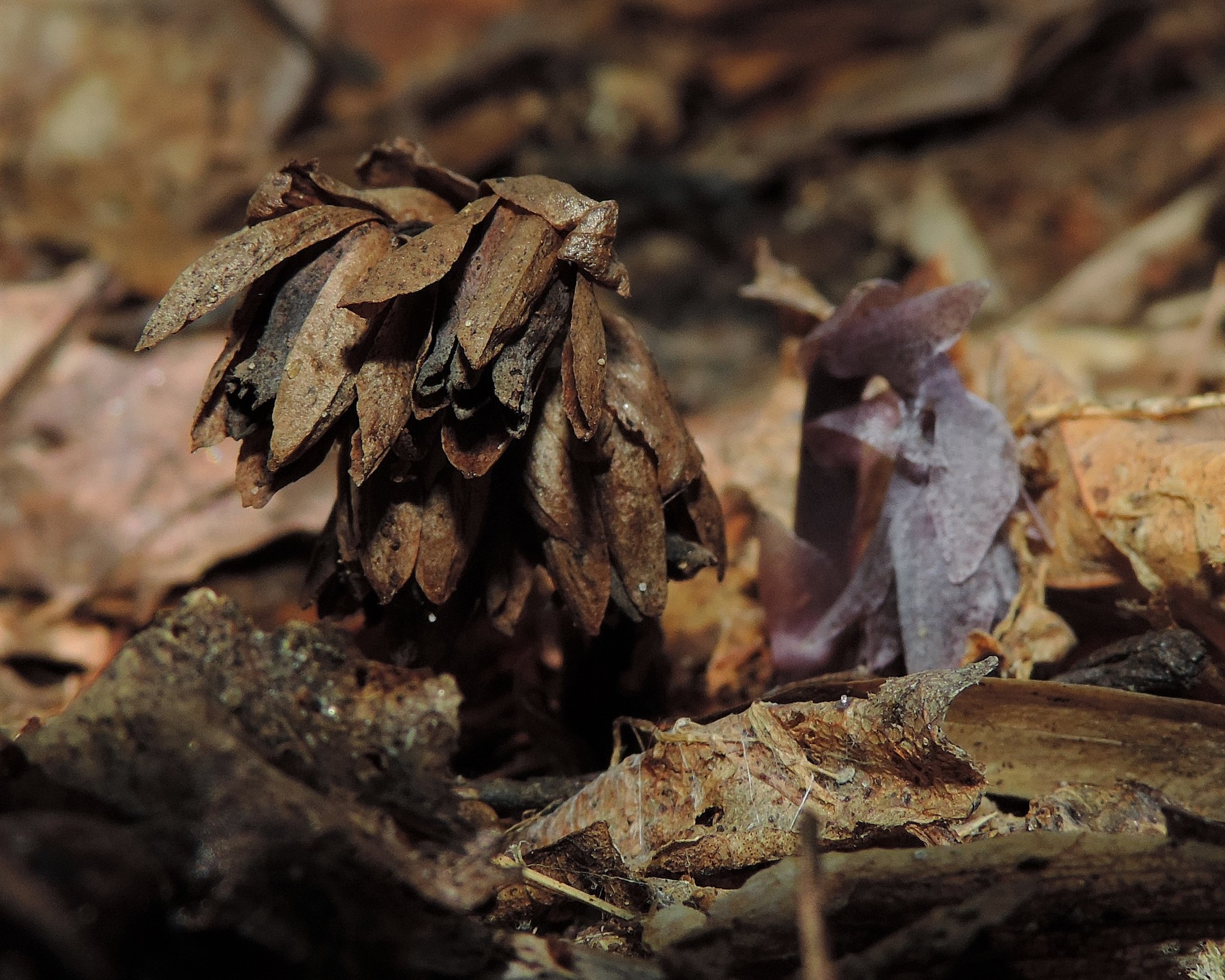Map Snapshot







22 Records
Status
Occurs in dry to mesic, Oak-Pine-Heath forests, ranging from Virginia and Delaware south to Alabama and Florida (Simmons, 2013, p. 11). Considered extirpated in Maryland except for one population in Calvert County and one in Carroll County. The Calvert County population is in decline (MD DNR, 2018). The Carroll County population was discovered in 2020.
Pygmy Pipes does not contain chlorophyll, so is not green and does not get its food through photosynthesis as most plants do. Pygmy Pipes is a mycoheterotroph, getting its food through parasitism upon fungi. These fungi derive their food via mycorrhizal associations with nearby tree roots.
Description
Two-four inches tall, thus smaller than its relative, Pinesap. Flowers several, very fragrant.
Where To Find
As noted under "Status" above, considered nearly extirpated in Maryland. So small it may be hidden in leaf litter on forest floor.
Seasonality Snapshot
Source: Wikipedia
| Monotropsis | |
|---|---|

| |
| Scientific classification | |
| Kingdom: | Plantae |
| Clade: | Tracheophytes |
| Clade: | Angiosperms |
| Clade: | Eudicots |
| Clade: | Asterids |
| Order: | Ericales |
| Family: | Ericaceae |
| Subfamily: | Monotropoideae |
| Tribe: | Monotropeae |
| Genus: | Monotropsis Schwein. ex Elliott |
| Species: | M. odorata
|
| Binomial name | |
| Monotropsis odorata | |
| Synonyms | |
|
Schweinitzia Elliott ex Nutt. Gen. N. Amer. Pl. 2(Add.): 14 (1818), nom. superfl. | |
Monotropsis is a monotypic genus of plants containing the single species Monotropsis odorata, also known as sweet pinesap or pygmy pipes. It is a member of the subfamily Monotropoideae of the family Ericaceae. It is found in the states of Alabama, Delaware, Florida, Georgia, Kentucky, North Carolina, South Carolina, Tennessee and Virginia,[1] and is native to the Appalachian Mountains in the south-eastern United States. It is viewed as being uncommon throughout its range.
Like all members of the subfamily, Monotropsis odorata does not contain chlorophyll; it is a myco-heterotroph, getting its food through parasitism upon fungi rather than photosynthesis. These fungi form a mycorrhiza with nearby tree species.
Monotropsis odorata has a sweet smell which has been likened to nutmeg, cinnamon or violets.
References
[edit]- ^ a b "Monotropsis Schwein. ex Elliott | Plants of the World Online | Kew Science". Plants of the World Online. Retrieved 22 October 2022.
External links
[edit]
